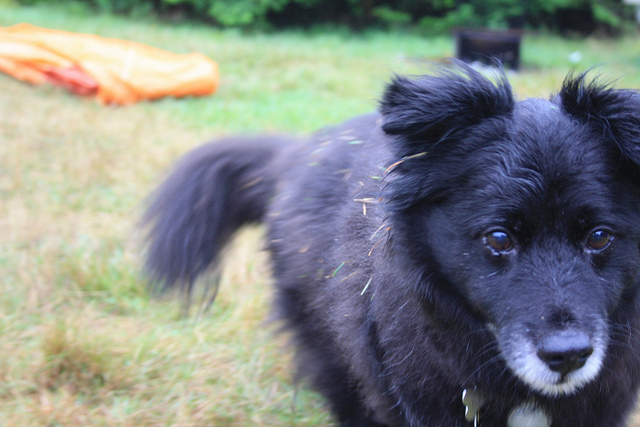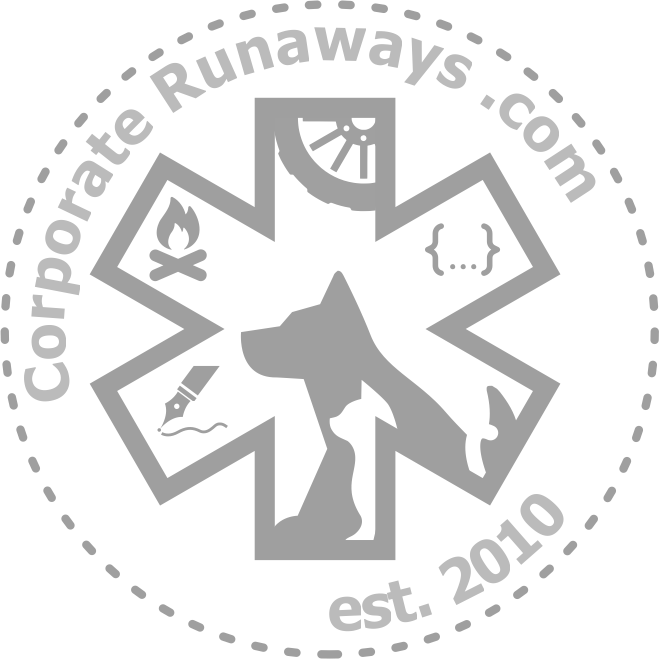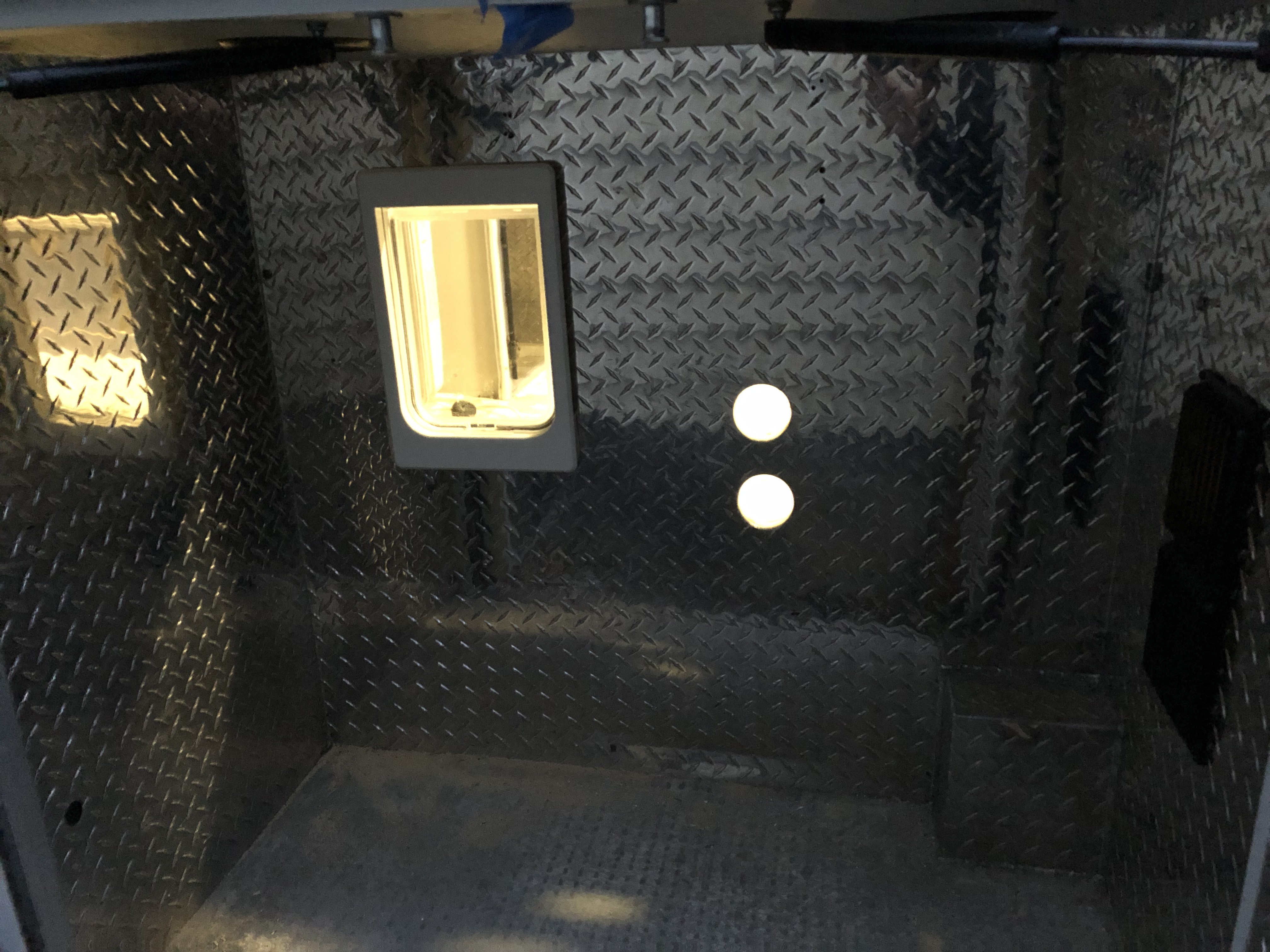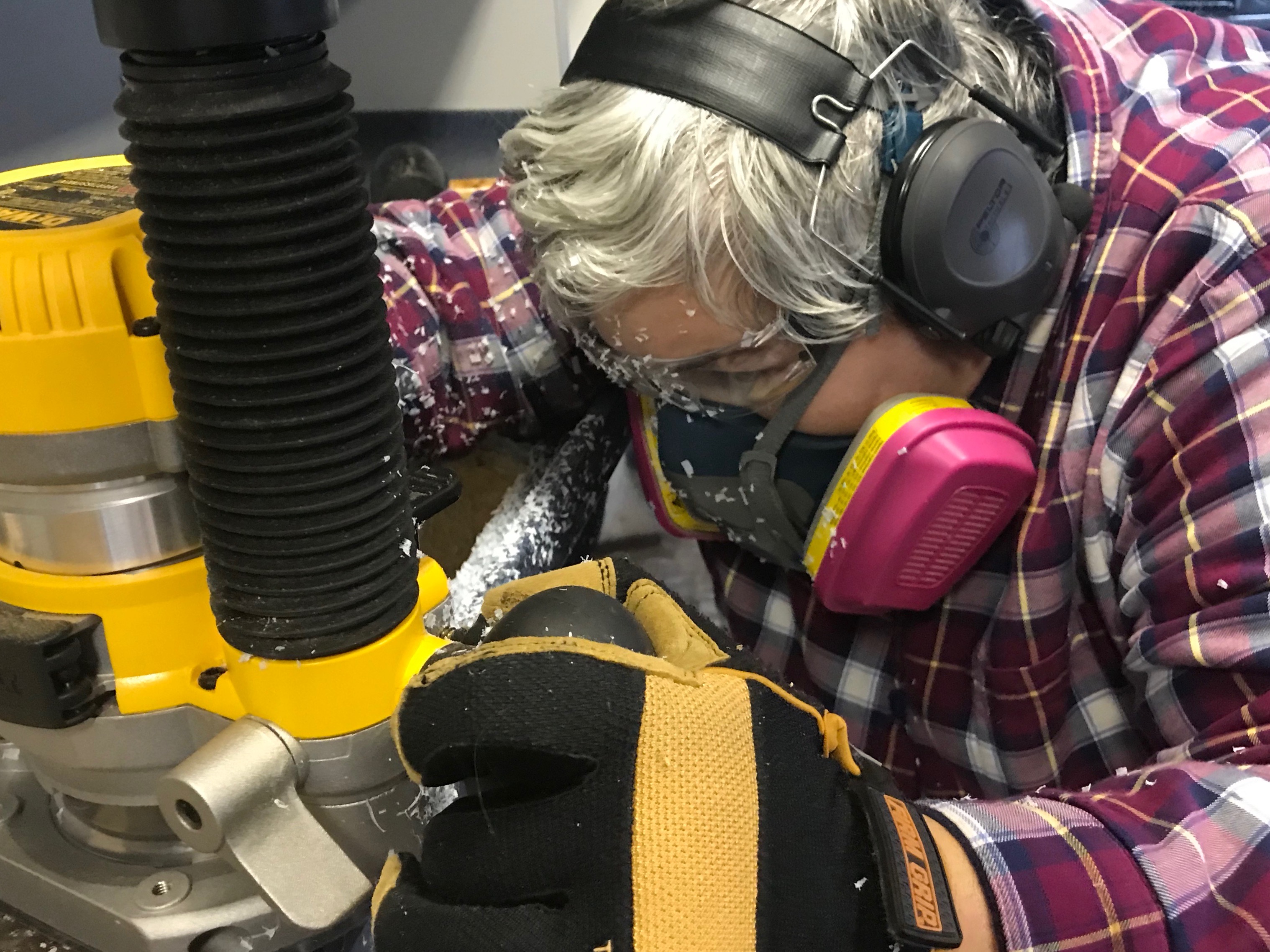
Traveling with dogs
We’ve traveled long distances with dogs in a sidecar to Colorado, and Nova Scotia. We took them in a Vanagon to Arizona and around most of the continental US in a Subaru Outback. We’ve slept with them in tents, in the Vanagon, and in many hotels.
So, we’ve got some experience. Here’s what we’ve learned.
They change everything
Dogs completely change the journey. Adults travel very differently than adults with dogs. I imagine it to share a lot of similarities to adults traveling with kids. In addition to the practical complications, which i’ll get to below, they change the feeling of the trip. Now you’re sharing it with creatures that don’t think the way you do. They get all excited about the new smells, and exploring that new trails is way more exciting for them, than you, regardless of how beautiful it is.
Practically speaking this means you’re going to make a lot more stops. They need to stretch their legs, and pee or poo. You’re going to have to get them comfortable with using the grass on the edge of parking lots, even when there are lots of cars. You’re going to have to convince them to go quickly because some patches of grass simply aren’t big enough for wandering around and exploring until they’re bored enough to pee.
Sometimes you’ll have to trudge them through ice covered snow, because it’s the only thing that isn’t parking lot. You’ll both get over it, although they’ll rarely be happy about it.
Weather
They’re gonna need coats. No matter what you’re going to need a rain coat, because a soaking wet dog in a confined space with you is pretty much the definition of unpleasant. When it’s raining out there’s no-where to pause and shake out before getting into the car / van / whatever. They’re going to climb in and get things wet, so you need to keep as much wet out of their fur as possible.
In the cold weather most dogs are going to need coats. The challenge here is coats that won’t get snow caught in or under them, or get soaked when it starts to melt.
You’ll definitely want to pick up some booties. We really like the RuffWear Grip Tex ones. They’re pricey, but we’ve tried a bunch of different types of booties and these really do seem to be the best designed. Also, they’ll work well on hot pavement and sand, not just in the cold.
It’s very important to measure your dogs feet and get the right size of bootie.
Heat
In hot weather many people shave their long haired dogs, but it’s something you need to think carefully about when traveling. Elevation brings weather, and travel frequently brings elevation changes. My advice is to leave the fur, but bring cooling pads, and extra water for wetting down your dog. Evaporative cooling is an amazing thing.
We we traveling across Kansas in the middle of the summer. The dogs were in the sidecar, with the cover to keep the sun off, and let the wind flow by. The temperature was over 100°F and us humans were baking. One day we called it quits early, and got a hotel. It was just too hot to continue, and we were concerned about the beasts, but when we picked them up from the evaporative cooling pad they were on their undersides were nice and cool. They were shaded, and enjoying their journey while we baked.
Shade is as important as evaporative cooling in hot weather. You’re going to pull over, and the car is going to bake. Obviously you’ll need serious airflow, but you’re going to need shade too. The car may actually work if you’ve got some fans going too. When you get out of the car though, you need to have some shade for your beast, and something to sit on that isn’t going to bake them from below.
Remember, their pads are sensitive, and they can easily burn their paws on hot surfaces that you won’t even notice with your rubber soled shoes. Speaking of which, it should be noted that some dogs just don’t have the street-smarts to keep themselves from harm.
We had two dogs, Ben, and Bandido. Ben was puzzle solving smart, but had no street-smarts. Bandido, wasn’t very bright, but knew how to keep himself safe. We pulled over one hot day, on some rather toasty pavement. When we got out Bandido immediately crawled under the sidecar to be shaded. Ben laid down on dark black blacktop in the baking sun. He would have overheated very quickly if we didn’t compensate for his cluelessness.
Booties with soles, like the RuffWear Grip Tex are great for protecting your dogs paws from hot pavement, and sand. Never underestimate hot sand.
Overall, my advice can be summed up as fans, cooling pads, and lots of water in, and on the dogs.
I should also point out that it doesn’t matter how cool you manage to make your dogs inside your vehicle people are going to freak out. One day it was in the mid nineties outside our vehicle and low eighties inside the vehicle. We had a woman yelling at us about how we shouldn’t have our dogs in the vehicle, and should let them out. We noted that if we let them out of the vehicle it’d be even hotter, and they wouldn’t have shade, but that didn’t matter. She’d heard her whole life how dogs will overheat quickly in a vehicle and should never be left in one. It didn’t matter that they had fans and shade. Logic was not a relevant consideration.
The best advice we’ve come up with is to just stay with the dogs as much as possible.
Cold
When they’re outside it’s all down to the coats and boots. Many coats don’t cover the underside of dogs, so you’ll have to pay attention to how well they work for your dog, and how much cold they can handle for how long with them. Don’t go on any long trails in the cold until you know how well your dog can handle it with their gear.
Booties are pretty important too for winter use. Some people use little rubber ballon-like things. They’re ok for short trips outside, but if you’re going for a long walk, or camping outdoors, you’ll need something more substantial.
Staying warm at night is pretty important too. As with humans, one of the most important things to do is insulate yourself from the ground. Inflatable pads under your sleeping pad are great. They’re great for the dog too. While it’s generally easy to get your dogs to sleep on something soft, many dogs are not interested in sleeping under the covers. This is simply going to take practice.
I had a great dane that hated being under the covers, until one winter the power went out, and took the heat with it. We pulled the dog into bed, and covered her, and us, and then forcibly held her there until she warmed up, and stopped trying to get away. After that night, she loved being covered. Other dogs we’ve simply waited until they curled up and got chilly and then covered them with the child-sized sleeping bag we got for them. I’m not sure what the best way to train a dog to allow themselves to be covered is, but that’s what worked for us.
In a car / van it’s pretty much the same thing. If you’ve a safe propane heater in your vehicle (a wonderful luxury) you’ll all be toasty all night long, but most folks don’t have this, so it’s pretty much like camping. Obviously there are things you can do to insulate your vehicle, and prevent heat loss through the windows, but that’s a bit off-topic for this post.
Gross
Sooner or later your dog is going to roll in something disgusting. One of our dogs found vomit and instantly threw himself in it and rolled around before we could stop him. We were traveling in the sidecar and had few resources on hand, but we did have baby wipes, the water in our camel-backs, and some camp soap.
You’ll need to have water on hand all the time anyway, but flushable baby-wipes are great for humans and dogs. They’re moist, and hold themselves together far better than paper towel. Be sure that whatever soap you have isn’t going to hurt your dogs if they lick their fur after you wash them with it.
General washing
You and your dogs can use the same stuff. You may want to have a dog specific shampoo with you, but baby shampoo will work fine for you and the dogs. Like the humans, we have a towel for each dog. My advice is to go with lightweight camp towels that can be easily wrung out. On wet days you’re going to need to use them multiple times, or else you’ll have soaking wet seats and bedding. So, its best if you can wring it out and have it ready for re-use later in the day.
On the road we generally don’t wash our dogs very often. Mostly just when they absolutely need it.
For dogs, and people both, we really like the NEMO Helio portable pressure shower. It collapses down into itself and it has good pressure. Great for washing out disgusting things in your dogs fur… or yours.
Food & Water
Water
There are a number of travel bowls that are designed to not spill in a vehicle. We make sure to have water always available in cars and vans. In the outback we just put it in the footwell behind the passenger seat. They can stick their heads around the edge of the dog hammock to bend down and drink. Whenever we stop we refill it, and hold it up for them to easily drink from. In the sidecar we just had to pull over more often to make sure they stayed hydrated.
Food
Most dog foods hold up pretty well at room temperature, and higher. You’re going to have to keep your vehicle cool enough for the dog to live in so, by default it’s going to be cool enough to keep their food safe.
It is important to try and maintain a schedule with regards to feeding times. It’s very easy on a road trip for schedules to… disappear. You’re going to have to stop more often anyway. Just be sure to stop around dinner time every day to give them a break to stretch and eat.
In the car, we almost always fed the dogs outside, unless it was raining. In the Vanagon it was much easier. Feeding dogs in a tent isn’t too bad, but you have to figure out how to keep the water from getting stepped in or drooled out all over the tent floor.
Physical Comfort
If your in a car, a dog hammock is a great investment. It dramatically increases the amount of space they have in the back seat, and it keeps the seats clean…well, cleaner.
If you’ve got beading out during the day then make sure that dirty muddy dogs won’t be able to make it gross when they inevitably hop onto it. I think keeping them from enjoying your bedding while driving is a fools errand. Plus, you want them to be comfortable right?
If there’s not space for the dog to sleep in the bed with you at night, make sure they have something big and squishy to curl up in. A car seat just isn’t good enough, and it’s not designed for their body shapes. Hell, they’re not designed for human body shapes either, when trying to sleep.
If your dog’s going to be sticking their head out the window a lot you should consider dog goggles. We had “Doggles” which are kind-of like swimming goggles with a chin strap to keep them on. I’m not convinced they were a great idea, because they actually cut down on peripheral vision a lot. If we had to do it again, I’d try some dog goggles that were more like ski goggles: one big plastic visor that fits across both eyes.
Doggie goggles aren’t just to make your dog look stylish. A lot of dogs get things like sand and grit blown in their eyes when looking out car windows. A scratched cornea is very uncomfortable, and that’s the best case scenario. Better to just protect your dogs yes.
First Aid
Most of the things in your human first aid kit can be used for you dogs too. I’d recommend taking an animal first aid course. Immobilizing a broken dog leg isn’t the same as a humans. Also speaking to your vet about what items to put in a field kit for your dog.
If you have a breed prone to bloat you’re going to need drugs to shove down their throat (some of the over-the-counter human drugs are safe for dogs). You may also want to consider some medical tubing, a large needle, and a roll of tape for handling extreme cases, when you’re not going to get to a vet in time. Obviously you’re going to want to do the research, and talk to your vet to you know what to do with that stuff. They did not cover that in the animal first-aid course I took, but I kept them on hand when I had great danes. ;)
Getting Stuck
If you’re going to be traveling any back roads with your dog something to think about is what happens when you get stuck. In the desert, when your car dies, and the battery can’t support a fan anymore, how do you keep your dog cool during the day? Do you have enough water for you and them? What about staying warm at night? If you’ve followed the advice above, and brought plenty of water you should be fine.
The nice thing about roads is that cars use them. Now, a fire-road in the middle of a forest somewhere might not get used for weeks at a time (or more) but normal roads, even dirt ones, tend to exist because people needed to get somewhere regularly enough to go through a boatload of work to make that road. So, someone will probably be by in the not too distant future.
Basically, ask yourself if it will be possible to keep your dogs physically safe and thermally regulated if you’re stuck without the normal resources of your car for a few days. What about if you have to walk out from your remote camp spot?
U.S. National Parks
The U.S. National parks are amazing places to be, unless you have a dog.
Most of them only allow dogs in specific camping areas, or on a very limited set of trails. Usually the very touristy ones close to parking lots. If you want to get remote in a National Park you’ll probably have to do so illegally.
My point is to not assume that the great outdoors that you’ve been so encouraged to visit actually wants your dog to visit with you. Find out before you go there. We’ve been to many national parks with our dogs, but every time we’ve been frustrated at how little we were allowed to visit with them.
International Borders
Don’t assume you’ll be able to take your dog across the border. Don’t assume you’ll be able to bring your dog back once it has crossed the border. The world is divided into different levels of Rabies risk. Traveling from a low risk to equal or higher risk is generally possible, but going from a high risk to lower risk is much harder and may involve a quarantine period.
You should be very careful when traveling with a Pit Bull. I believe that Canada, for example, was able to confiscate your Pit Bull on sight and destroy it. There are/were efforts to change this, which may have gone through since this was written, but never assume your dog can cross an international border. When they can cross you’ll usually need recent paperwork from your vet regarding their vaccinations. How recent depends on the country you’re entering.
Other Humans
People love to come up to your dogs. It doesn’t matter if the dogs are barking and growling threatening warnings. “Dog’s love me!” they’ll say as your dog threatens to eat them alive. People have no sense of self-preservation when it comes to dogs.
No matter what people are going to want to talk to you about your dogs, and meet them and pet them. If you’ve got friendly dogs this is great. If you’ve got protective dogs… not so much.
The good thing about barky dogs is that you don’t have to worry about people breaking into your car. The bad thing is you’ll always feel guilty when you go into a restaurant without them because you know they’ll be out there barking their heads off.





